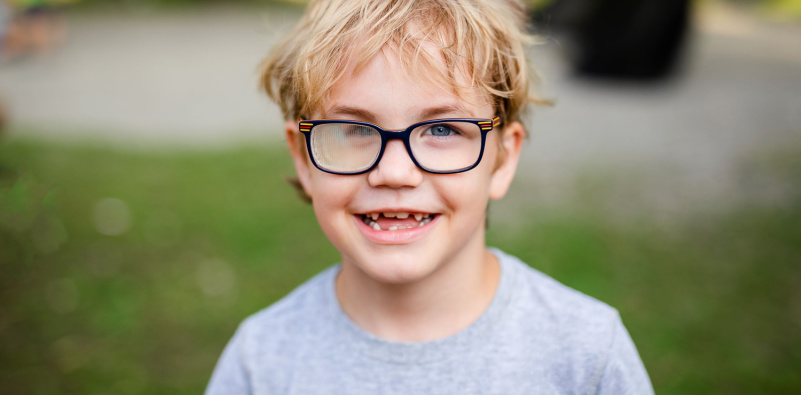Exploring children’s vision problems
When children experience vision problems, they can sometimes be misconstrued as behavioral issues or learning difficulties. Amblyopia and strabismus are two of the most common children’s vision problems, but what exactly are they?
What is amblyopia?
Amblyopia, commonly referred to as a ‘lazy eye’ is when a child experiences reduced vision in one eye because one eye is weaker than the other due to receiving fewer visual signals. It usually develops around the age of 7 and can present itself in several ways, including:
- Wandering eyes that turn inward or outward
- Eyes that don’t work together
- Lack of depth perception
- Squinting or shutting one eye
- Tilting the head
Amblyopia can appear in any child. Several different vision issues can cause amblyopia, such as muscle imbalance (strabismus amblyopia) in the eye that prevents both from working together. It can also be caused by a difference in prescription, where one eye is farsighted, and the other may be nearsighted, or have astigmatism.
What treatments are available for amblyopia?
Amblyopia has a high treatment success rate if treated as early as possible, preferably before the age of 7. Options to help correct this condition include:
- Glasses or contacts lenses – these can correct nearsightedness, farsightedness, or astigmatism, which can result in a lazy eye.
- Eye patches – a patch can be placed over the stronger eye for anywhere between two to six hours per day, stimulating the weaker one to strengthen.
- Bangerter filter – this is a filter that can be placed on the glasses lens of the stronger eye, to blur it and thus stimulate the weaker eye to work harder and strengthen.
- Eye drops – special eye drops called atropine can be prescribed, which temporarily blur the vision of the stronger eye to encourage use of the weaker eye.
What is strabismus?
Strabismus, also known as a crossed eye, or a squint, occurs when the eyes aren’t aligned with each other due to the eye muscles not working correctly to control eye movement. This means the brain can’t merge what one eye can see with the other. This typically develops in children under the age of 6, but usually first begins between birth and 21 months.
Common signs include double vision, and either one or both eyes wandering, turning in, out, up, or down, squinting, or closing one eye to look at something. If left untreated, this condition can get worse as a child grows older.
Again, early treatment is crucial to correct this eye problem in children, but the first step is getting a comprehensive eye examination, which we recommend from the age of 3 onwards. This will help us determine whether your child has strabismus.
What are the treatments for strabismus?
There are several treatment options for strabismus, depending on the severity and age of your child. The first suggestion will likely be glasses if their strabismus is mild – either single vision to correct either distance or near vision, or bifocal, which can correct both.
Prisms for glasses may also be recommended, which helps the image that both eyes see to align, preventing double vision.
An eye patch to wear for a few weeks or months over the stronger eye might be given to help align the weaker one with it.
Vision therapy like eye exercises to strengthen the muscles are usually provided too.
Visit our optometrists in Ontario
If you suspect your child has vision problems, don’t hesitate to contact our friendly and professional optometrists in Ontario for your peace of mind.




